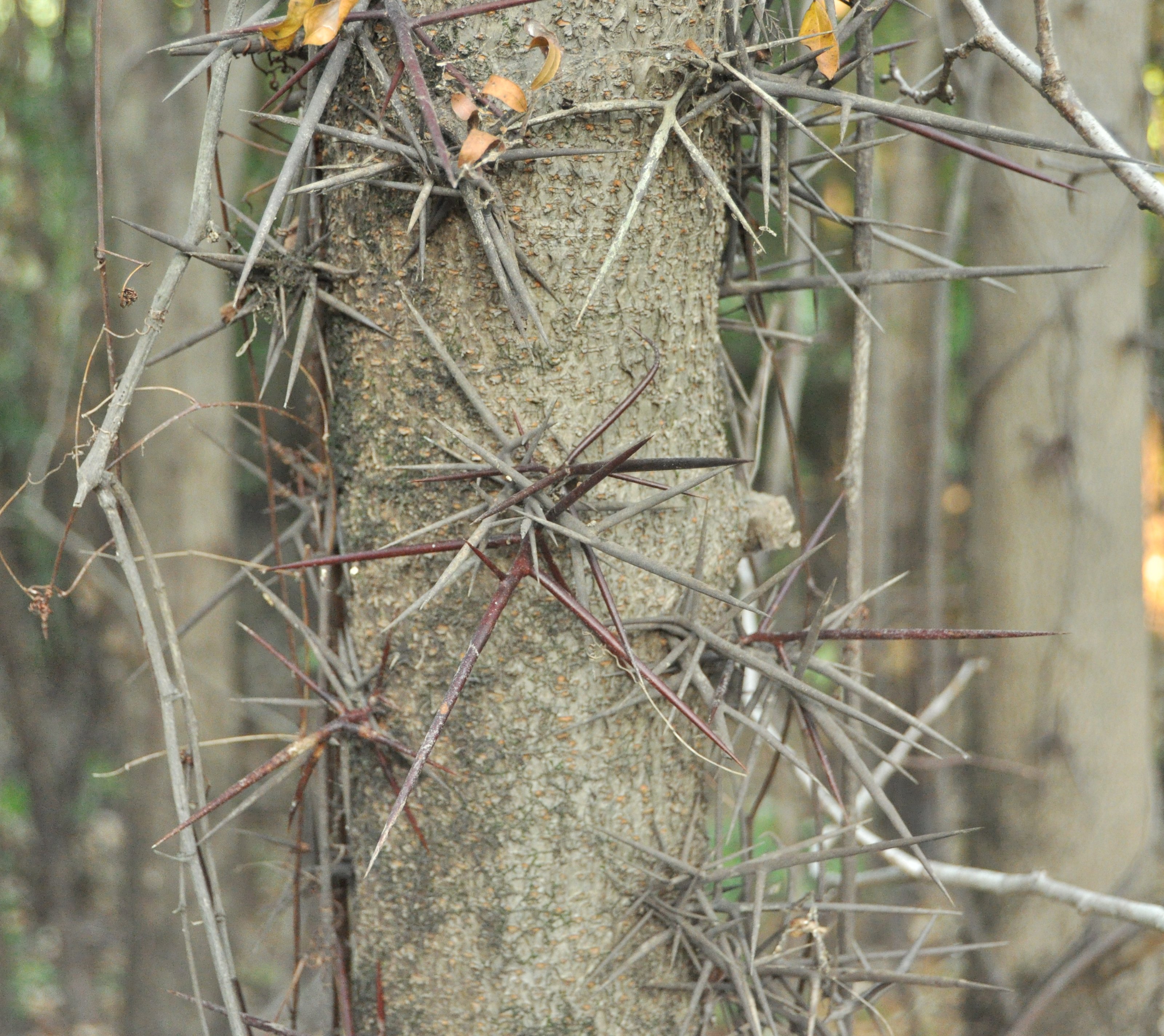Water locust thorny trees! I am concerned about getting flats on the Mahinda 5010 tractor while clipping the pasture. Or my truck while riding through! Now and far into the future, but not sure how much the latter is a concern. It's because of what we always called Water Locust trees, incredibly thorny monsters. These things have thousands of thorns several inches long that are like nails, like super big hypodermic needles. If you've never seen one, check the image at the bottom. Growing up on the farm, we had to bushhog the pastures and we'd get flats from these thorns. So, what to do. How do you get rid of these? I could hire a forestry mulcher that has tracks and he could certainly do it. But how long would you need to not drive in that spot!
A couple of years ago in this same pasture, we cut some in the open pasture with a chainsaw and polesaw and carefully stacked every single limb and made brush piles. I am now going to burn those and hope every thorn burns! But I now need to clear a heavily infested spot, dozens of trees to reclaim that part of the pasture. What is the best method is the question. And also how long these thorns can remain a pest. Like, many years before they rot?
These trees are beautiful trees otherwise and make a great conversation topic; I would like to save a couple of the more picturesque ones but I worry about them shedding a limb here and there and... flats. The trees also makes great firewood but dealing with the massive thorn clusters, yikes. I suppose that these trees are cousins of the honey locust tree. I wish they were just black locust or the thornless honey locust variety.


